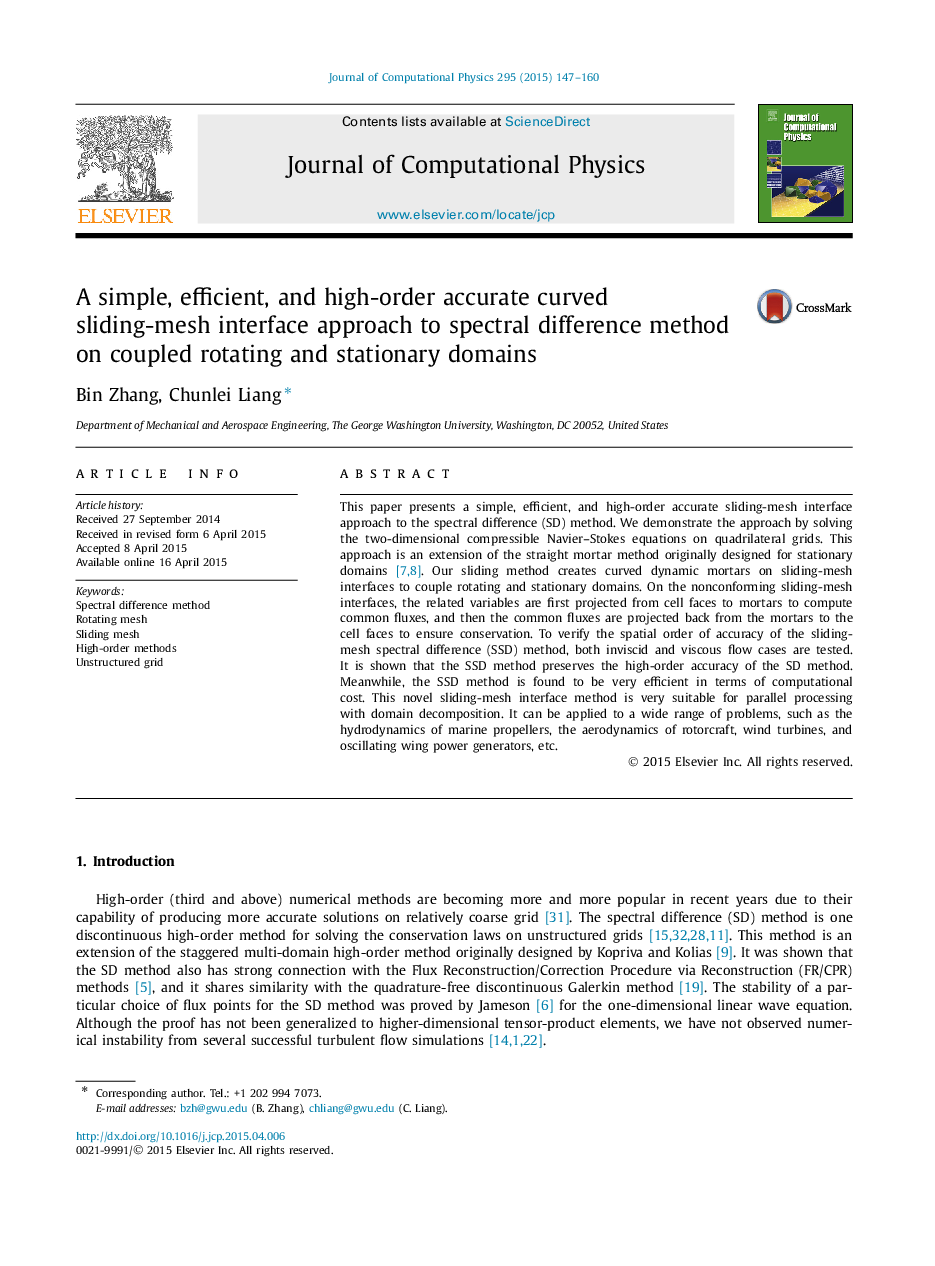| Article ID | Journal | Published Year | Pages | File Type |
|---|---|---|---|---|
| 6931355 | Journal of Computational Physics | 2015 | 14 Pages |
Abstract
This paper presents a simple, efficient, and high-order accurate sliding-mesh interface approach to the spectral difference (SD) method. We demonstrate the approach by solving the two-dimensional compressible Navier-Stokes equations on quadrilateral grids. This approach is an extension of the straight mortar method originally designed for stationary domains [7], [8]. Our sliding method creates curved dynamic mortars on sliding-mesh interfaces to couple rotating and stationary domains. On the nonconforming sliding-mesh interfaces, the related variables are first projected from cell faces to mortars to compute common fluxes, and then the common fluxes are projected back from the mortars to the cell faces to ensure conservation. To verify the spatial order of accuracy of the sliding-mesh spectral difference (SSD) method, both inviscid and viscous flow cases are tested. It is shown that the SSD method preserves the high-order accuracy of the SD method. Meanwhile, the SSD method is found to be very efficient in terms of computational cost. This novel sliding-mesh interface method is very suitable for parallel processing with domain decomposition. It can be applied to a wide range of problems, such as the hydrodynamics of marine propellers, the aerodynamics of rotorcraft, wind turbines, and oscillating wing power generators, etc.
Related Topics
Physical Sciences and Engineering
Computer Science
Computer Science Applications
Authors
Bin Zhang, Chunlei Liang,
